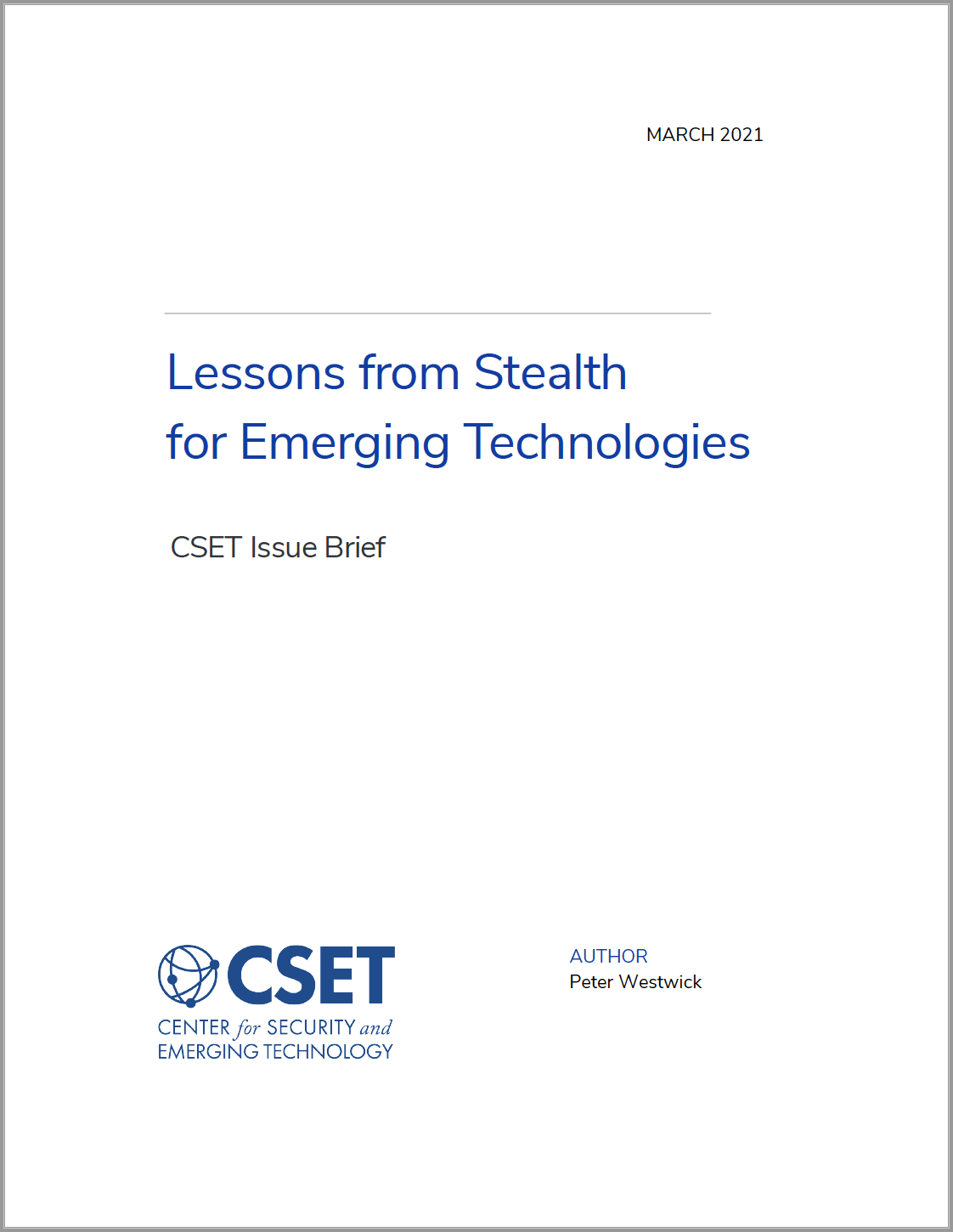Peter Westwick
 Stealth technology was one of the most decisive developments in military aviation in the last 50 years. With U.S. technological leadership now under challenge, especially from China, this issue brief derives several lessons from the history of Stealth to guide current policymakers. The example of Stealth shows how the United States produced one critical technology in the past and how it might produce others today.Download Full Report
Stealth technology was one of the most decisive developments in military aviation in the last 50 years. With U.S. technological leadership now under challenge, especially from China, this issue brief derives several lessons from the history of Stealth to guide current policymakers. The example of Stealth shows how the United States produced one critical technology in the past and how it might produce others today.Download Full ReportIntroduction
On the moonless night of January 17, 1991, seven aircraft appeared in the skies over Baghdad. The aircraft were F-117As, better known as Stealth fighters, and they were part of the opening salvo of Operation Desert Storm. Iraq had a formidable radar-based air defense system, but its defenses could not detect the F-117s. Stealth aircraft decimated Iraqi targets during the Gulf War, and no Stealth aircraft were shot down.
Stealth technology—the ability to reduce an aircraft’s radar signature by several orders of magnitude—is one of the most important developments in military aviation in the last 50 years. Stealth gave the United States overwhelming air superiority; instead of needing dozens of aircraft to strike a single defended target, a single Stealth aircraft could destroy multiple targets. Stealth’s performance in the Gulf War also demonstrated U.S. technological preeminence. If the United States could make aircraft undetectable by radar, what else could it do? Stealth represented a gauntlet thrown down to potential economic and military competitors: they would have to match the United States’ seemingly boundless ability to generate new technologies or fall behind.
Thirty years later, the technological and strategic context has changed in many respects, and there is renewed interest in understanding the source of emerging technologies. Stealth was a prime example of the United States’ ability to field emerging technologies with decisive results, and its origins can help show how the country produced one emerging technology in the past and how it might produce others today. This paper will use the history of Stealth to identify several lessons for technological development that may help guide current policymakers to specific opportunities, taking into account what has changed—and what has not—in today’s strategic environment.
Download Full Report Lessons from Stealth for Emerging Technologies
No comments:
Post a Comment